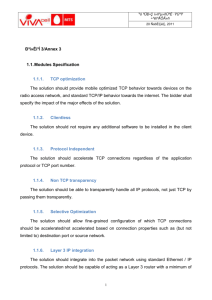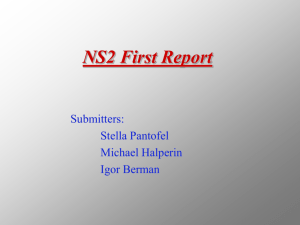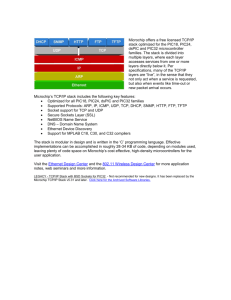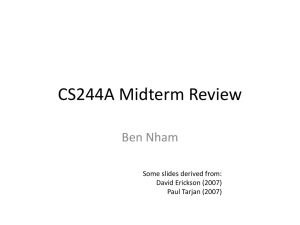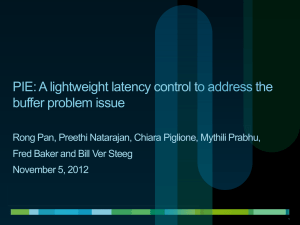Summary of the paper “A Duality Model ofTCP and Queue
advertisement
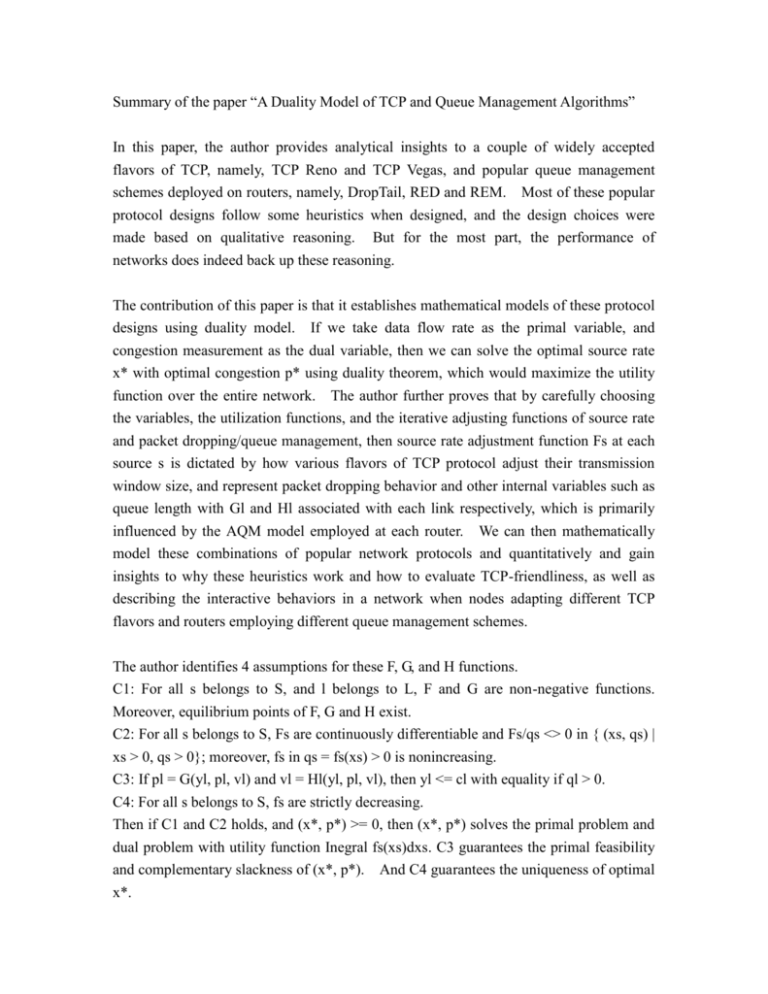
Summary of the paper “A Duality Model of TCP and Queue Management Algorithms”
In this paper, the author provides analytical insights to a couple of widely accepted
flavors of TCP, namely, TCP Reno and TCP Vegas, and popular queue management
schemes deployed on routers, namely, DropTail, RED and REM. Most of these popular
protocol designs follow some heuristics when designed, and the design choices were
made based on qualitative reasoning. But for the most part, the performance of
networks does indeed back up these reasoning.
The contribution of this paper is that it establishes mathematical models of these protocol
designs using duality model. If we take data flow rate as the primal variable, and
congestion measurement as the dual variable, then we can solve the optimal source rate
x* with optimal congestion p* using duality theorem, which would maximize the utility
function over the entire network. The author further proves that by carefully choosing
the variables, the utilization functions, and the iterative adjusting functions of source rate
and packet dropping/queue management, then source rate adjustment function Fs at each
source s is dictated by how various flavors of TCP protocol adjust their transmission
window size, and represent packet dropping behavior and other internal variables such as
queue length with Gl and Hl associated with each link respectively, which is primarily
influenced by the AQM model employed at each router. We can then mathematically
model these combinations of popular network protocols and quantitatively and gain
insights to why these heuristics work and how to evaluate TCP-friendliness, as well as
describing the interactive behaviors in a network when nodes adapting different TCP
flavors and routers employing different queue management schemes.
The author identifies 4 assumptions for these F, G, and H functions.
C1: For all s belongs to S, and l belongs to L, F and G are non-negative functions.
Moreover, equilibrium points of F, G and H exist.
C2: For all s belongs to S, Fs are continuously differentiable and Fs/qs <> 0 in { (xs, qs) |
xs > 0, qs > 0}; moreover, fs in qs = fs(xs) > 0 is nonincreasing.
C3: If pl = G(yl, pl, vl) and vl = Hl(yl, pl, vl), then yl <= cl with equality if ql > 0.
C4: For all s belongs to S, fs are strictly decreasing.
Then if C1 and C2 holds, and (x*, p*) >= 0, then (x*, p*) solves the primal problem and
dual problem with utility function Inegral fs(xs)dxs. C3 guarantees the primal feasibility
and complementary slackness of (x*, p*). And C4 guarantees the uniqueness of optimal
x*.
The author then visits one variant of TCP Reno which halves the windows size when
marking is discovered, and the other which only halves the window size only once in a
round trip time, and define the difference functions for Fs and utility functions Us. He
next visits RED and REM marking for queue management, and define pl(t) which is the
probability of markings, corresponding to the Gl function in the model mentioned above.
He then shows that for the combinations of TCP flavors/AQM on a single link, closed
form solutions may be obtained. In the case of Reno/RED the solution also shows how
choosing different parameter might reduce equilibrium queuing delay at the cost of
stability.
This quantitative approach also verifies some previously made observations such as how
Reno discriminate against sources with larger round trip time, or how to model slight
variation of window size management by changing terms in the formula.
Vegas/DropTail
Smoothed version.
Reno-like, TCP-friendly, Binomial algorithm
Interaction






